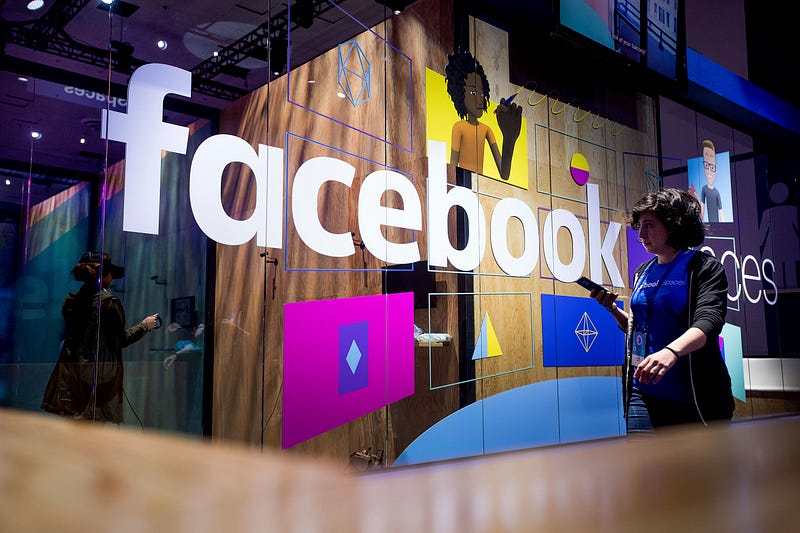A hurricane has been brewing at Facebook.
After years of suspicion, a veteran female Facebook engineer decided to evaluate what if any gaps there were in how female and male engineers’ work was treated.
She did it “so that we can have an insight into how the review process impacts people in various groups,” the Wall Street Journal learned exclusively.
Her analysis, conducted in September, found that female engineers’ work was rejected 35 percent more than their male counterparts based on five years of open code-review data. Women also waited 3.9 percent longer to have their code accepted and got 8.2 percent more questions and comments about their work.
Only 13 percent of Facebook’s engineers are women, 17 percent across all tech roles.
The identity of the engineer is unknown, but her findings sparked a whirlwind discussion of gender bias inside the social network after it was released last year. A group of senior Facebook officials led by Facebook’s head of infrastructure, Jay Parikh, conducted their own review of the engineer’s analysis and concluded that the rejection gap was because of the engineer’s rank rather than gender.
Facebook confirmed Parikh’s findings, calling the engineer’s data incomplete, the Wall Street Journal reported. Parikh said in an internal report revealing his analysis that while the gender component wasn’t “statistically significant” it was “still observable and felt by many of you,” and urged employees to take the company’s voluntary implicit bias training.
The report is the latest incidence of the tech industry’s rampant diversity and inclusion problem. In recent years, tech companies such as Facebook, Google, and Yahoo have tried to tackle this by releasing annual diversity reports, which have shown marginal improvements in racial and gender disparities.
But Silicon Valley’s gender problem goes beyond the numbers. Facebook is the second major tech company this year to have potentially damning evidence of gender bias exposed by an employee. Earlier this year, former Uber engineer Susan Fowler detailed her experiences with sexual harassment and stalled career path at the company. Fowler’s story ballooned into a media firestorm, one that Uber still hasn’t recovered from.
Neither of Facebook’s analyses and methodologies have been independently verified, but the preliminary results and Facebook’s response fall in line with how companies have previously dealt with allegations of sexism. Past surveys and studies have found that men in tech often don’t think there’s a gender problem in the industry. And when women report incidents of sexual harassment as culturally pervasive, men have said they were unaware.
Hopefully, Facebook’s voluntary bias training, which stresses bias’ impact and how to get rid of it, will become mandatory.
Original Article
Source: thinkprogress.org
Author: Lauren C. Williams
After years of suspicion, a veteran female Facebook engineer decided to evaluate what if any gaps there were in how female and male engineers’ work was treated.
She did it “so that we can have an insight into how the review process impacts people in various groups,” the Wall Street Journal learned exclusively.
Her analysis, conducted in September, found that female engineers’ work was rejected 35 percent more than their male counterparts based on five years of open code-review data. Women also waited 3.9 percent longer to have their code accepted and got 8.2 percent more questions and comments about their work.
Only 13 percent of Facebook’s engineers are women, 17 percent across all tech roles.
The identity of the engineer is unknown, but her findings sparked a whirlwind discussion of gender bias inside the social network after it was released last year. A group of senior Facebook officials led by Facebook’s head of infrastructure, Jay Parikh, conducted their own review of the engineer’s analysis and concluded that the rejection gap was because of the engineer’s rank rather than gender.
Facebook confirmed Parikh’s findings, calling the engineer’s data incomplete, the Wall Street Journal reported. Parikh said in an internal report revealing his analysis that while the gender component wasn’t “statistically significant” it was “still observable and felt by many of you,” and urged employees to take the company’s voluntary implicit bias training.
The report is the latest incidence of the tech industry’s rampant diversity and inclusion problem. In recent years, tech companies such as Facebook, Google, and Yahoo have tried to tackle this by releasing annual diversity reports, which have shown marginal improvements in racial and gender disparities.
But Silicon Valley’s gender problem goes beyond the numbers. Facebook is the second major tech company this year to have potentially damning evidence of gender bias exposed by an employee. Earlier this year, former Uber engineer Susan Fowler detailed her experiences with sexual harassment and stalled career path at the company. Fowler’s story ballooned into a media firestorm, one that Uber still hasn’t recovered from.
Neither of Facebook’s analyses and methodologies have been independently verified, but the preliminary results and Facebook’s response fall in line with how companies have previously dealt with allegations of sexism. Past surveys and studies have found that men in tech often don’t think there’s a gender problem in the industry. And when women report incidents of sexual harassment as culturally pervasive, men have said they were unaware.
Hopefully, Facebook’s voluntary bias training, which stresses bias’ impact and how to get rid of it, will become mandatory.
Original Article
Source: thinkprogress.org
Author: Lauren C. Williams

No comments:
Post a Comment